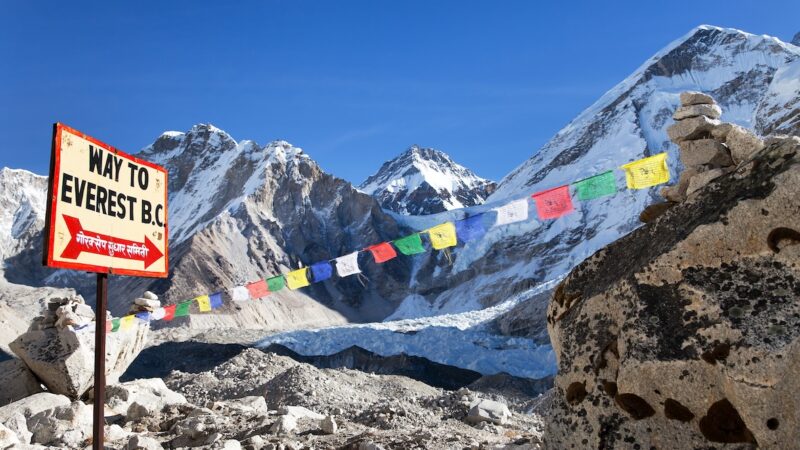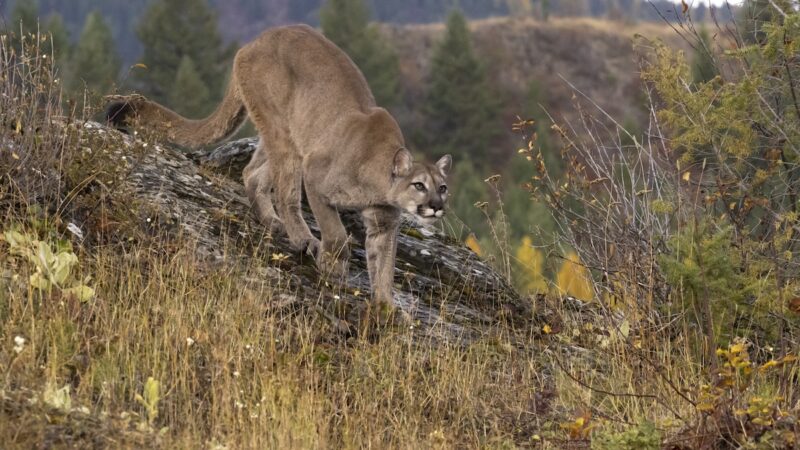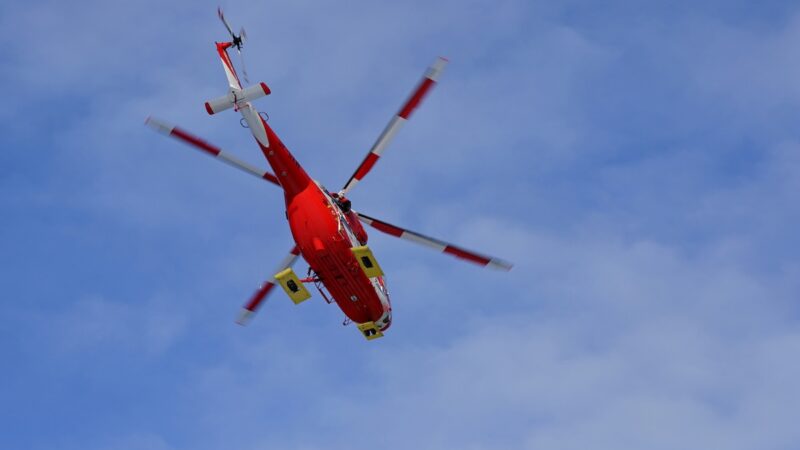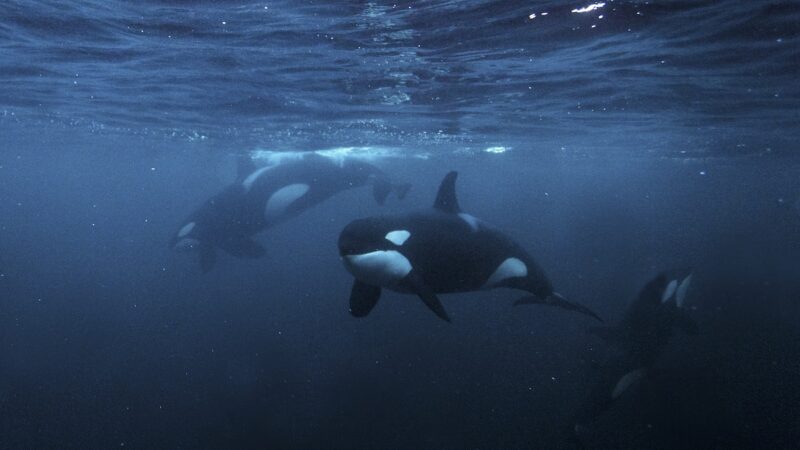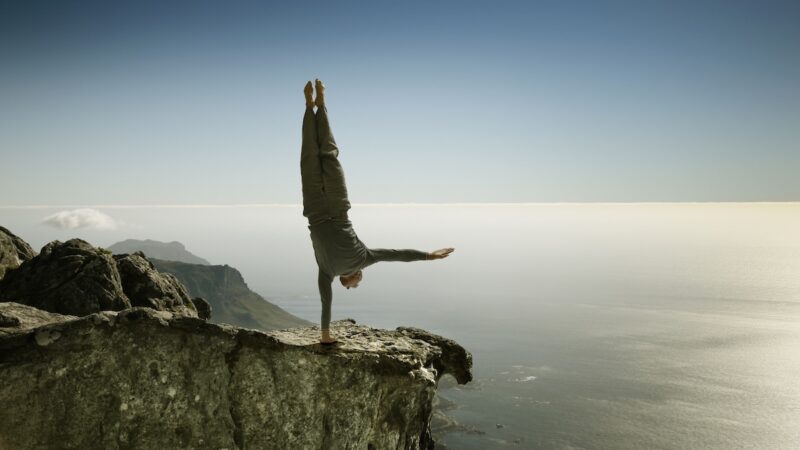Want to See Wild Grizzly Bears (Safely)? Get Your Paws on This Itinerary for Homer, Alaska
“Oh, nice, are you going on a cruise?”
Videos by Outdoors
This was the response I got last summer when I told friends that we were going to Alaska on our family vacation.
“No, we’re going to Homer,” I replied. This answer was generally met with blank stares followed by me explaining why we chose this far-flung destination devoid of any fancy buffets and planned shore excursions.
My husband and I and our two teenage sons like active, off-the-beaten-path trips. Homer, Alaska promised up-close bear encounters, hiking, fishing, berry picking, and a touch of Russian history. Located 200 miles south of Anchorage, the town of 6,000 people also had a few good restaurants, a must for our foodie family.
Here’s what we did.
Getting Up Close with Grizzly Bears
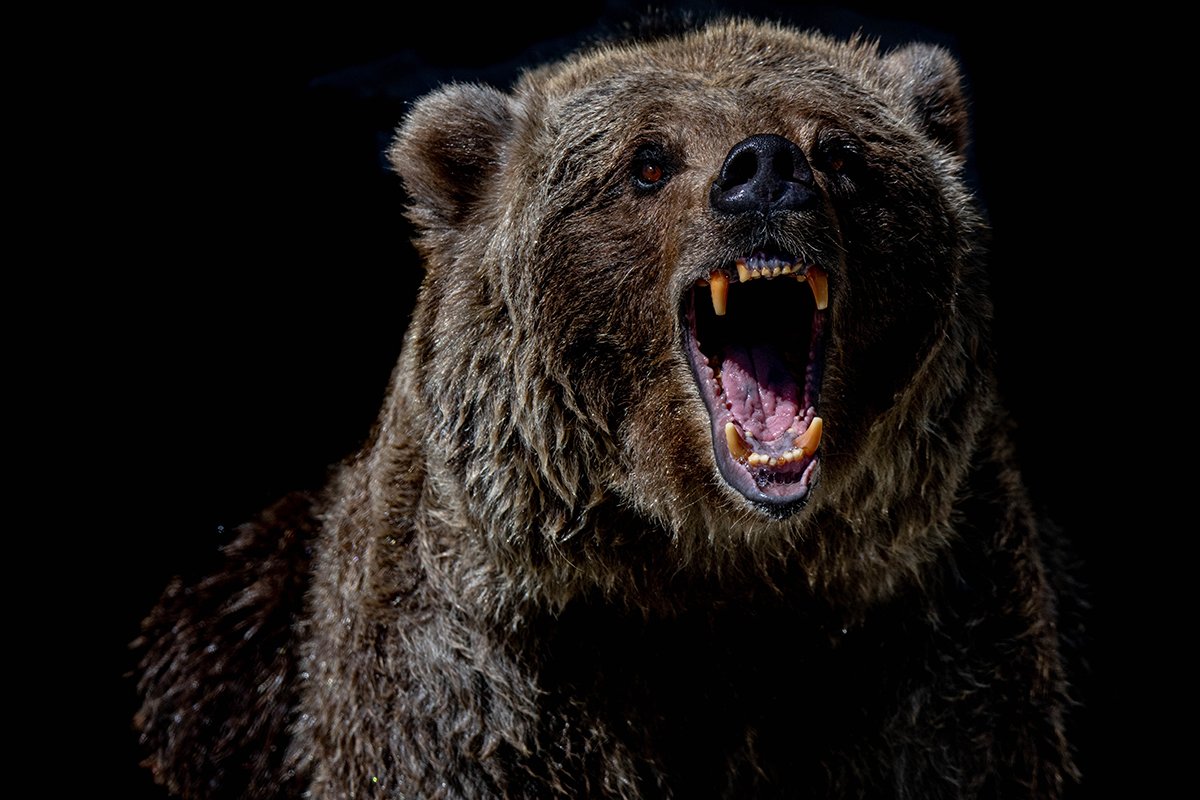
One of the activities that lured us to Homer was the chance to see grizzly bears in the remote wilderness. We signed up for a half-day guided bear-viewing trip with Alaska Bear Adventures. The day we arrived, we headed to their office to check in and get weighed. We would be taking off the next morning in a Cessna bush plane to grizzly territory. It was critical to have accurate weight distributions in these small planes, the guide explained. We also went over the rules: bring lunch, but no tuna sandwiches or snacks with crumbs; don’t wear any clothes worn fishing. Grizzlies have an acute sense of smell and can detect food from 20 miles away in certain circumstances.
The next morning, we had a safety briefing about how to send an emergency distress signal, donned life vests and hip waders, and boarded the four-passenger plane. I hoped my older son paid attention to which buttons to push on the radio, since he was sitting next to the pilot. Our destination was Lake Clark National Park, one of the world’s most renowned bear-viewing locations. The only way to get to this remote glacier-fed lake is by plane or boat.
The clouds parted as we approached the lake, and our pilot (who was also our naturalist guide) circled a few times before landing on the beach. Small black dots moved across the landscape. As we descended, the dots morphed into bears splashing in the river. After a bumpy landing, we hiked along the beach toward the furry mammals. Summer is feeding time, and they were bulking up for winter. A mom and her cub grazed on sedge grass just across the stream from us. A mature male napped nearby, his distinctive hump visible above the tall grass. He didn’t seem to be bothered by us at all.
The hour passed quickly as the bears roamed in front of us with the snow-capped Aleutian Mountains in the background. Reluctantly, we climbed back into the plane. The pilot had a surprise: he took the longer, scenic route back to Homer, flying over icy blue glaciers, volcanos, snow fields, and turquoise lakes. I pressed my face (and my camera) against the window to capture the jagged mountains and fertile valleys. I’m not sure which was the most impressive part of the day: the majestic bears or the view of their remote, wild habitat.
Pro tip: Nature buffs who want to spend more with the bears can book a six-day immersive experience at Nat Hab’s Alaska Bear Camp, complete with heated tents and gourmet meals.
Hiking in Kachemak Bay State Park
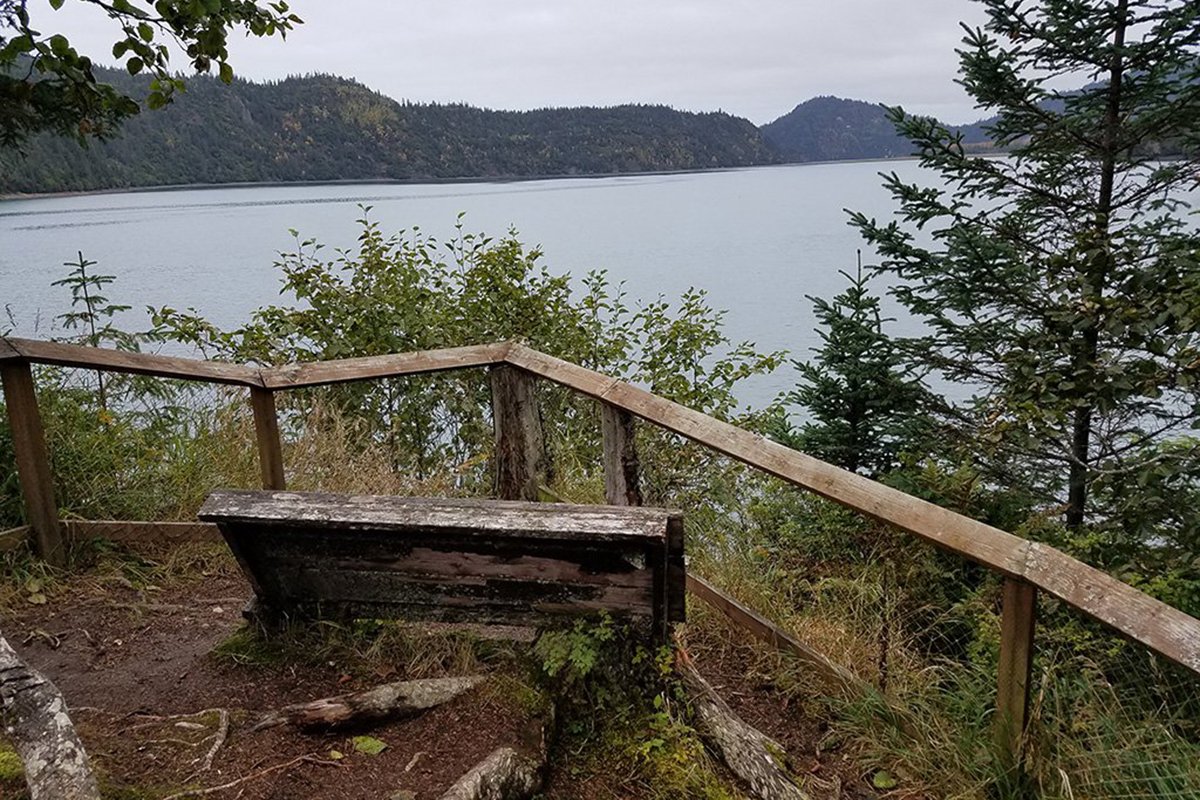
The snowy Chugach Mountains in Kachemak Bay State Park beckoned us from across the water. This remote 400-acre wilderness playground on the Kenai peninsula can only be reached by plane or boat, adding to the allure. We booked a quick 20-minute water taxi ride to spend the day hiking in the park. On a “rare sunny day,” (locals told us there had been three the whole summer), the water sparkled like diamonds. Playful sea otters seemed to be enjoying the weather too, and the captain slowed for a closer look. These adorable marine mammals were a close tie to the bear cub we saw in the race for cuteness.
We pulled in just close enough so that the fold-down ladder from the boat reached the beach. After arranging a late afternoon pickup from another cove, we waved goodbye to the captain. I felt a bit like a contestant on Survivor as I took a mental inventory of my supplies: lunch, water, bear spray, sunscreen, mosquito netting, and plenty of warm clothes.
To access the Glacier Lake trailhead, we walked a half-mile along the gravel beach, stopping to look for starfish in the tidal pools along the way. We traded the salty smell of the ocean for the woodsy scent of spruce trees as we entered the forest. We stopped for a closer look at some animal prints on the trail—maybe a coyote or a fox? Red and yellow columbine, pink fireweed, and alien-like mushrooms all caught our attention. Small, red oblong watermelon berries made a juicy snack.
About an hour into the hike, the Grewingk Glacier came into view. Icebergs of all sizes greeted us as we arrived at the lake. After lunch, I rested my head on a driftwood log. Glancing behind me, I saw that both my sons were resting too. Is there anything better than a full stomach and a nap in the sunshine?
Not wanting to miss the boat, we started toward our pickup spot. We finished the 6-mile trek in good time, stopping to enjoy the views over Halibut Cove. Instead of waiting on the beach, we explored a lesser-traveled trail along the ridge, carefully avoiding the Devil’s Club plants with their irritating spines. As the trail narrowed, piles of bear scat appeared everywhere and a musky scent hung in the air.
“Whoever’s in front should have the bear spray ready,” I called out to my sons who were farther down the trail.
“I guess I should figure out how this thing works,” my older son replied, taking the bear spray out of his backpack. The next thing we knew the air was filled with eye-watering pepper spray. We hiked down the hill to the water taxi pickup spot, laughing the whole way and trying to clear our throats and lungs.
Pro Tip: Be bear aware. Hike in groups, carry bear spray, and make noise. Don’t leave food unattended and dispose of garbage in bear-proof containers.
Visiting Seldovia
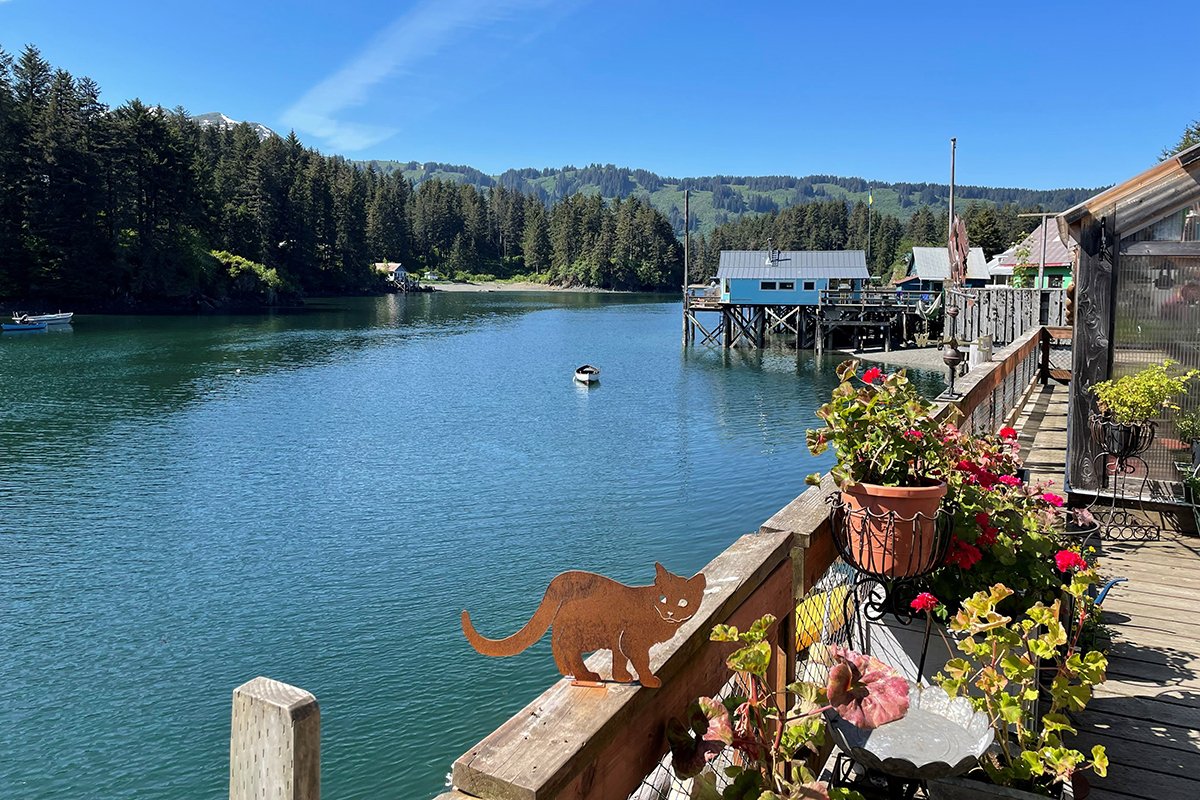
Athabascan Indians, indigenous Aleuts, and native Sugpiak Eskimos lived in Seldovia for hundreds of years before Russian fur traders arrived in the 1800s. The newcomers christened their home “Herring Bay” in Russian, and fish canneries remained a strong economic force until the Good Friday Earthquake in 1964, which leveled the town. It took a decade to rebuild.
Just across the bay from Homer, this picturesque village of 250 residents is accessed only by plane or boat. We booked seats on the Seldovia Bay Ferry for the 45-minute choppy ride across the bay. A sea otter lazed in the harbor, greeting the ferry.
Visitors come to Seldovia for stunning views, hiking, kayaking, and berry picking in summer. The fact that it’s hard to get to means it’s not overrun with tourists like some of Alaska’s better-known spots. We explored the historic boardwalk at the top of the harbor, poking into shops selling sea-glass jewelry and seal-fur wallets made by Native Alaskans.
The Seldovia Visitor Center & Museum is a great place to learn about the history of the area and pick up a map. St. Nicholas Russian Orthodox Church sits just up the hill, and we stopped for a quick look. Built in 1891, the church is still used today on Russian holidays and funerals. Central Park sits next to the church, with whimsical wood carvings of marine mammals. We walked to the outskirts of town to the Otterbahn Trail, known for prolific wild blueberries. Unfortunately, the cold summer meant we only found a few salmon berries and thimble berries along the 1-mile route. Interpretive signs along the trail point out flora and fauna in the forest.
The trail ends at Outside Beach, where we were rewarded with expansive views of Mt. Redoubt and Mt. Iliamna across the water. These active, snowy volcanoes rise majestically out of water to reach above 10,000 feet. We couldn’t have asked for a better view from our picnic spot on the beach.
After lunch, we retraced our steps back into town, stopping at Jack and Avia’s Restaurant for an iced coffee and homemade wild raspberry cinnamon roll. We soaked up the sunshine on the deck before catching the ferry back to Homer.
Foraging at the Farmer’s Market
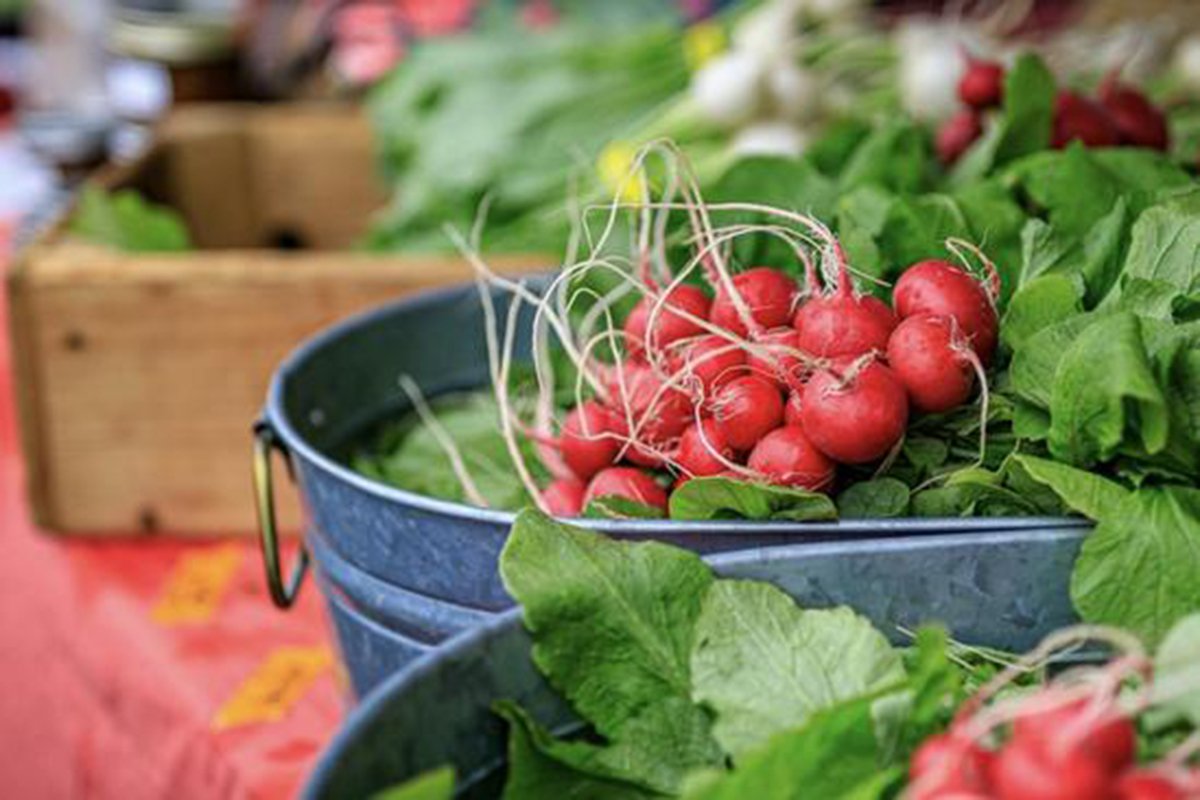
We also visited the Homer Farmer’s Market. When we arrived at 10 AM, the parking lot was already full. Friends were greeting each other and catching up in Russian and English. Families stood in line to buy produce from local farms and ice cream. It was summer after all, even if I was wearing a down jacket. Picnic tables provided a place to sit and socialize with a treat from the market.
First, we scoped out the gorgeous displays of buttery yellow cauliflower, purple kohlrabi, and red currants. There were all sorts of berries—from organic strawberries and huckleberries to some exotic cloudberries.
At one booth, a young boy and girl sold raspberry lemonade. Their mom handed us samples of homemade bread. Wearing a headscarf and apron, she spoke Russian with her kids. There are a few small communities on the outskirts of Homer settled by Russians who came for freedom to worship. Russian Old Believers Communities can be found scattered around the Kenai peninsula, including the towns of Nikolaevsk, Voznesenka, and Razdolna. Many became fishermen and some started farms, selling their goods at local markets.
I tucked the still-warm bread into my shopping bag and bought a jar of strawberry rhubarb jam and some purple broccoli for dinner. Since we hadn’t had any luck fishing, we stopped at Chugach Wild Salmon and picked up a whole salmon, a piece of frozen halibut, and some smoked salmon belly. Dinner was a true Alaskan feast.
Where to Stay and Eat in Homer, Alaska
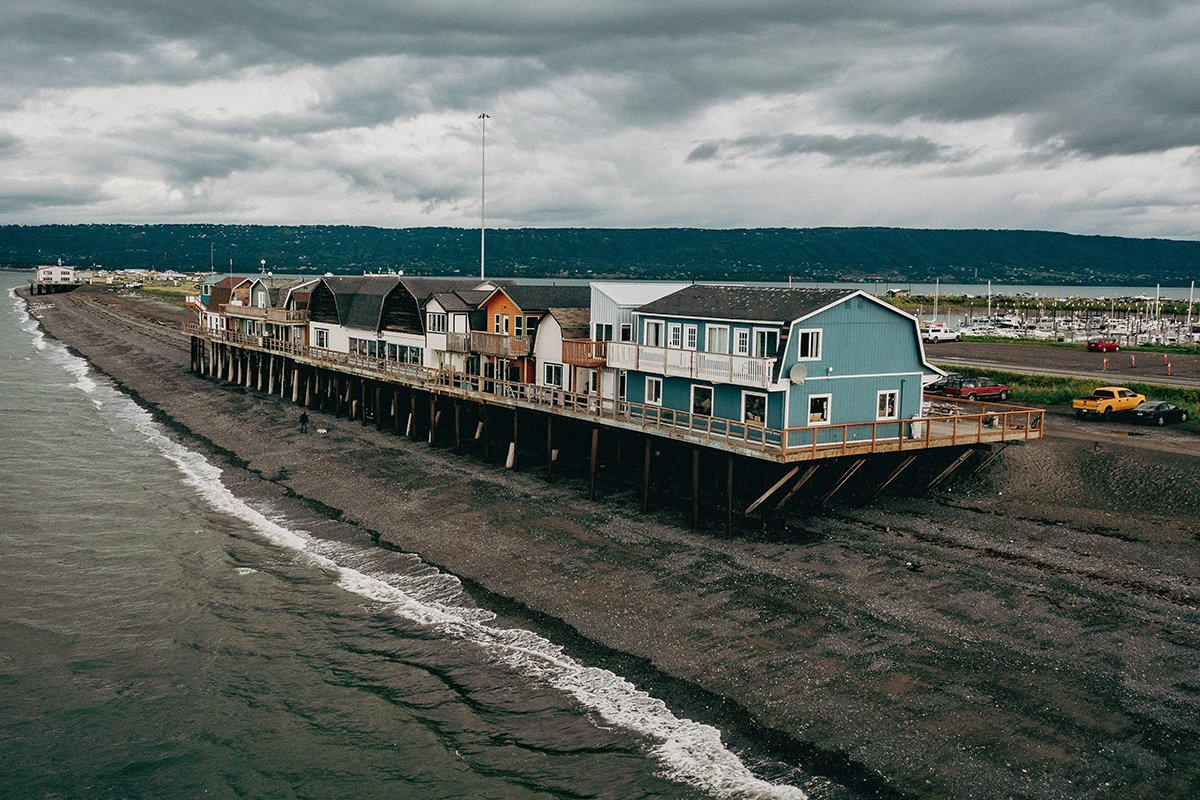
Since we like the extra space and a kitchen, we rented an Airbnb during our trip to Homer. If you prefer hotels, consider staying on Homer Spit. This 4.5-mile long landmass juts into Kachemak Bay, with stunning water and mountain views all around. The road is lined with restaurants and shops perched on wooden boardwalks overlooking the beach. Land’s End Resort commands a premium location at the end of the spit with 180-degree views. The Driftwood Inn is steps from Bishop’s Beach, a great location for beach walks and sunset viewing.
When we find a good thing, we stick with it. We ate twice at Finn’s Pizza, with its sunroom overlooking the bay, and twice at Boardwalk Fish & Chips. Finn’s makes wood-fired pizzas with local organic ingredients and hearty, warming soups. The choices are simple at Boardwalk Fish & Chips: halibut or cod. The perfectly cooked fish comes on a stick, surrounded by waffle fries. Go early if you want chowder, because they sell out. This casual seafood shack has inside and outside seating with water views. We stopped at Sea Sweets more than once (but who’s counting) to try the fresh, hot mini donuts and local chocolates. Turquoise Tree Organic Alaskan Chocolates come in unique flavors like spruce tip, fennel, and cranberry. We bought several and had our own chocolate tasting.
A week in Homer refreshed our appreciation for nature and our shared love of adventure. Hiking through spruce forests, picnicking with views of volcanoes, and looking for bears and berries in the wilderness created family memories that still linger.
Source: https://outdoors.com/travel-to-homer-alaska-to-see-grizzly-bears/

